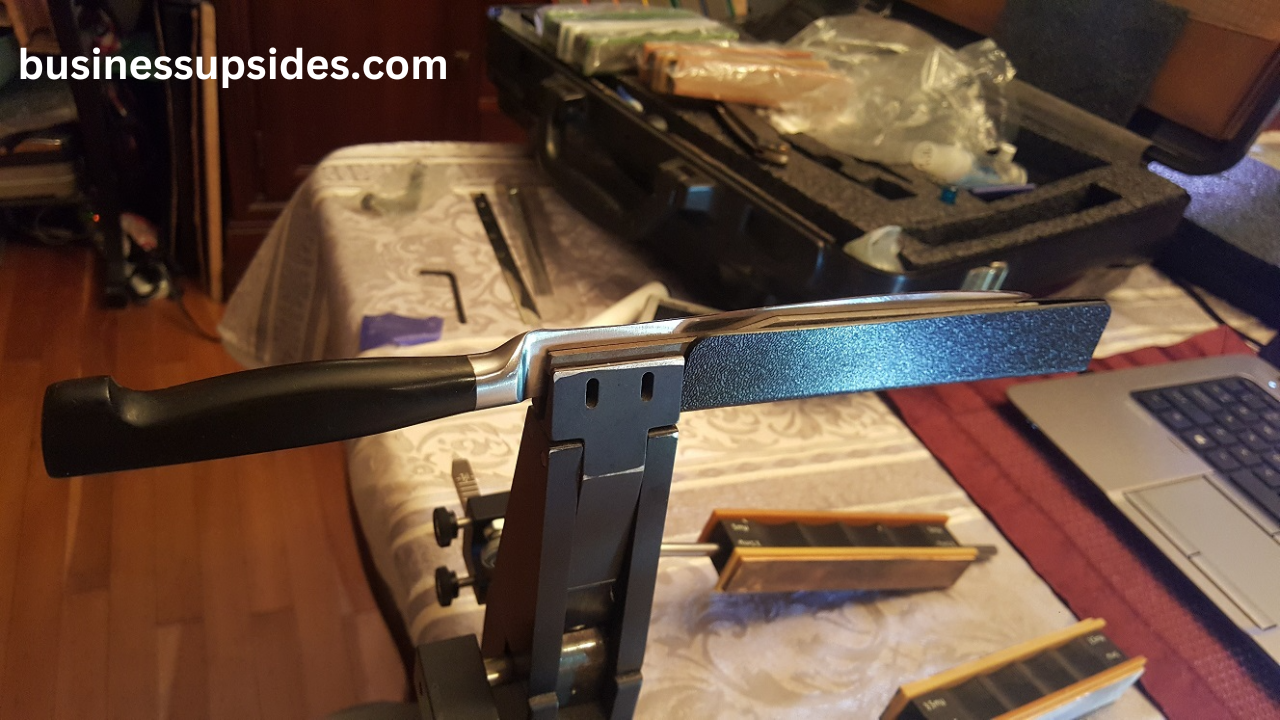How Flexible Blade Holders Enhance Precision in Cutting Tasks
A flexible holder is a vital tool in various industries, particularly those that require precision cutting or shaping, such as in the fields of design, manufacturing, and craft. Whether used in the creation of prototypes, product designs, or specialized art projects, the flexible blade holder plays a crucial role in ensuring accuracy, efficiency, and versatility. This article explores the definition, uses, benefits, and different types of flexible holders, providing readers with an in-depth understanding of this important tool.
What is a Flexible Blade Holder?
A flexible holder is a device used to hold and position a cutting blade during various types of tasks, particularly when precision and adaptability are important. Unlike traditional fixed blade holders, flexible holders are designed to allow the blade to bend or flex to a certain degree, offering greater maneuverability and flexibility in cutting.
This flexibility enables the user to apply the blade in more intricate or complex cutting scenarios, where rigid blade holders would be ineffective. For example, in delicate art projects, model-making, or custom design work, the blade must often navigate curves, corners, and delicate edges. In such cases, a flexible blade holder provides the perfect solution, allowing the blade to follow the contours of the material being worked on while maintaining a high level of control.
Blade holders come in different forms, with each type designed for specific applications and industries. Some models feature adjustable arms or shafts that allow users to control the degree of flexibility, while others may include features like ergonomic handles for improved comfort during extended use.
Types of Blade Holders
Flexible holders come in a variety of designs, each suited to different tasks or work environments. Below are some of the most common types:
1. Rotary Blade Holders
Rotary blade holders are commonly used in industries such as textiles, paper cutting, and even in the field of precision engineering. These holders allow for the blade to rotate as it cuts, providing a continuous cutting motion. The flexible arm that holds the blade allows for smooth transitions between straight and curved cuts, making it an ideal choice for both simple and complex designs.
Rotary blade holders are often adjustable, allowing users to change the angle or positioning of the blade to suit the task at hand. This feature is particularly useful in projects that require multiple cutting angles or when working with materials of varying thickness.
2. Art Blade Holders
Art flexible blade holders are commonly used by artists, crafters, and designers for precision cutting on delicate materials like paper, vinyl, or even fabric. These tools are designed to allow the blade to curve, bend, and follow intricate patterns, providing greater control and reducing the likelihood of mistakes.
Art blade holders can be equipped with various types of blades, such as fine-point blades, straight blades, or curved blades, depending on the specific requirements of the project. They are typically lightweight and easy to handle, allowing users to perform detailed work with precision.
3. Flexible Arm Blade Holders
A flexible arm blade holder features a flexible arm or shaft that allows the user to adjust the position and angle of the blade easily. This type of blade holder is often used in machinery or mechanical applications where precise control over the cutting angle and blade positioning is essential.
These holders are often made from durable materials like steel or reinforced plastic to ensure they remain stable during operation. The flexibility in the arm provides the user with the ability to manipulate the blade’s position with ease, making it ideal for cutting through various materials with different thicknesses and hardness levels.
4. CNC flexible blade holder
In the world of automated cutting and manufacturing, CNC (Computer Numerical Control) blade holders are often used in conjunction with CNC machines to perform highly precise and repeatable cuts. These holders are designed to work with computer-controlled cutting equipment, allowing users to input specific cutting paths and angles for maximum accuracy.
CNC blade holders offer a level of automation that traditional blade holders cannot match, allowing for high-volume production and efficient workflow. The flexibility of the holder ensures that the machine can cut through complex geometries and varied material thicknesses, all while maintaining consistent results.
5. Craft Blade Holders
Craft blade holders are designed for hobbyists, DIY enthusiasts, and small-scale manufacturers who need a flexible, low-cost solution for precision cutting. These tools are commonly used for cutting paper, foam, plastics, and thin metals.
Craft blade holders are often ergonomic and lightweight, making them ideal for prolonged use. Many feature adjustable blade positions, allowing the user to create both fine, intricate cuts and broader, straighter lines, all with a single tool.
Previous article; Ice Machine for Knee Surgery A Game Changer in Pain and Swelling
Applications of Blade Holders
Flexible holders have a broad range of applications across various industries, thanks to their versatility and precision. Some of the primary applications include:
1. Model Making
Model makers often require precise cutting tools to carve intricate designs, cut out small parts, and assemble complex models. Whether creating architectural models, prototypes, or scaled replicas, a flexible blade holder allows for the fine-tuned control needed to cut through a wide variety of materials, including foam, plastic, wood, and metal.
The flexibility in the blade holder allows users to navigate curves, corners, and detailed edges without damaging the material, which is a critical factor in high-quality model-making.
2. Textile Industry
In textile and fabric manufacturing, flexible holders are used in cutting machines to cut fabric in various shapes and sizes. These tools are especially useful when working with delicate fabrics or when there’s a need for precise cuts along curves or intricate patterns. The blade’s flexibility ensures smooth cuts without causing damage to the fabric, an important consideration in industries like fashion design or upholstery.
3. Crafting and DIY Projects
Crafting enthusiasts often turn to flexible holders to help them with various DIY projects, from creating detailed scrapbook pages to making custom greeting cards. The ability to cut through a variety of materials like paper, vinyl, and thin plastics with precision makes blade holders an invaluable tool in the crafting world.
These tools are commonly used in combination with cutting mats, which help prevent damage to surfaces while providing a safe area for cutting. Many crafting blade holders are designed with easy-grip handles and can be used for both straight cuts and curved designs, allowing the user to execute complex patterns and artwork.
4. Precision Engineering flexible blade holder
In fields like aerospace and automotive engineering, blade holders are essential for precision cutting and shaping of components. Parts may require specific cuts, grooves, or edges to fit within highly detailed mechanical systems. The ability to precisely control the blade angle and path ensures that every component is made to the correct specifications.
In many cases, CNC machines paired with blade holders are used to produce parts with exact dimensions. This level of precision is particularly crucial in industries where small tolerances can significantly impact performance and safety.
5. Sign Making and Graphic Design
Graphic designers and sign makers use blade holders to cut out vinyl decals, logos, and other designs for signs, advertisements, and promotional materials. The flexibility of the blade holder makes it easier to cut detailed and intricate designs without damaging the material, whether it’s vinyl, paper, or even thin plastic sheets.
These tools are indispensable for creating professional-quality designs that require both precision and speed.Blade holders are often used in conjunction with cutting plotters or design software to automate the process for mass production or custom work.
Benefits of Using a Blade Holder
1. Precision and Accuracy
The primary advantage of using a flexible blade holder is its ability to provide precise cuts, even in challenging applications. Whether cutting curves, corners, or complex patterns, the flexibility of the blade holder allows for a high degree of control, leading to cleaner and more accurate results.
2. Versatility
Flexible holders can be used across a wide range of industries, including engineering, arts and crafts, textile manufacturing, and model making. This versatility makes them a valuable tool for professionals and hobbyists alike, enabling them to tackle various tasks with ease.
3. Reduced Risk of Material Damage
Since the blade can flex and adjust to the material’s contours, there is a reduced risk of the blade causing unintended damage to the material. This is particularly important in delicate materials like fabric, paper, or thin metals, where even a slight mishap can ruin the workpiece.
4. Ergonomics and Comfort
Many flexible blade holders are designed with ergonomic handles and lightweight construction, making them comfortable to use for extended periods. This is especially beneficial in tasks that require detailed or repetitive cutting, as it helps prevent hand fatigue and strain.
5. Cost-Effective
Blade holders are generally affordable, especially when compared to other specialized cutting tools or machinery. Their ability to perform a variety of tasks, combined with their affordability, makes them an attractive option for hobbyists, small businesses, and professionals alike.
Conclusion
The flexible blade holder is an indispensable tool in a variety of fields, offering precision, flexibility, and versatility for a range of cutting tasks. Whether used in the crafting industry, engineering, model making, or precision cutting for textiles, the blade holder’s ability to adapt to different materials and cutting paths makes it a must-have tool for professionals and hobbyists alike. With its ergonomic design and adaptability, it not only enhances the cutting process but also ensures the creation of high-quality, detailed work that meets the highest standards.
By understanding the different types, applications, and benefits of flexible holders, users can select the best tool for their specific needs and maximize the efficiency and accuracy of their cutting tasks.











Post Comment